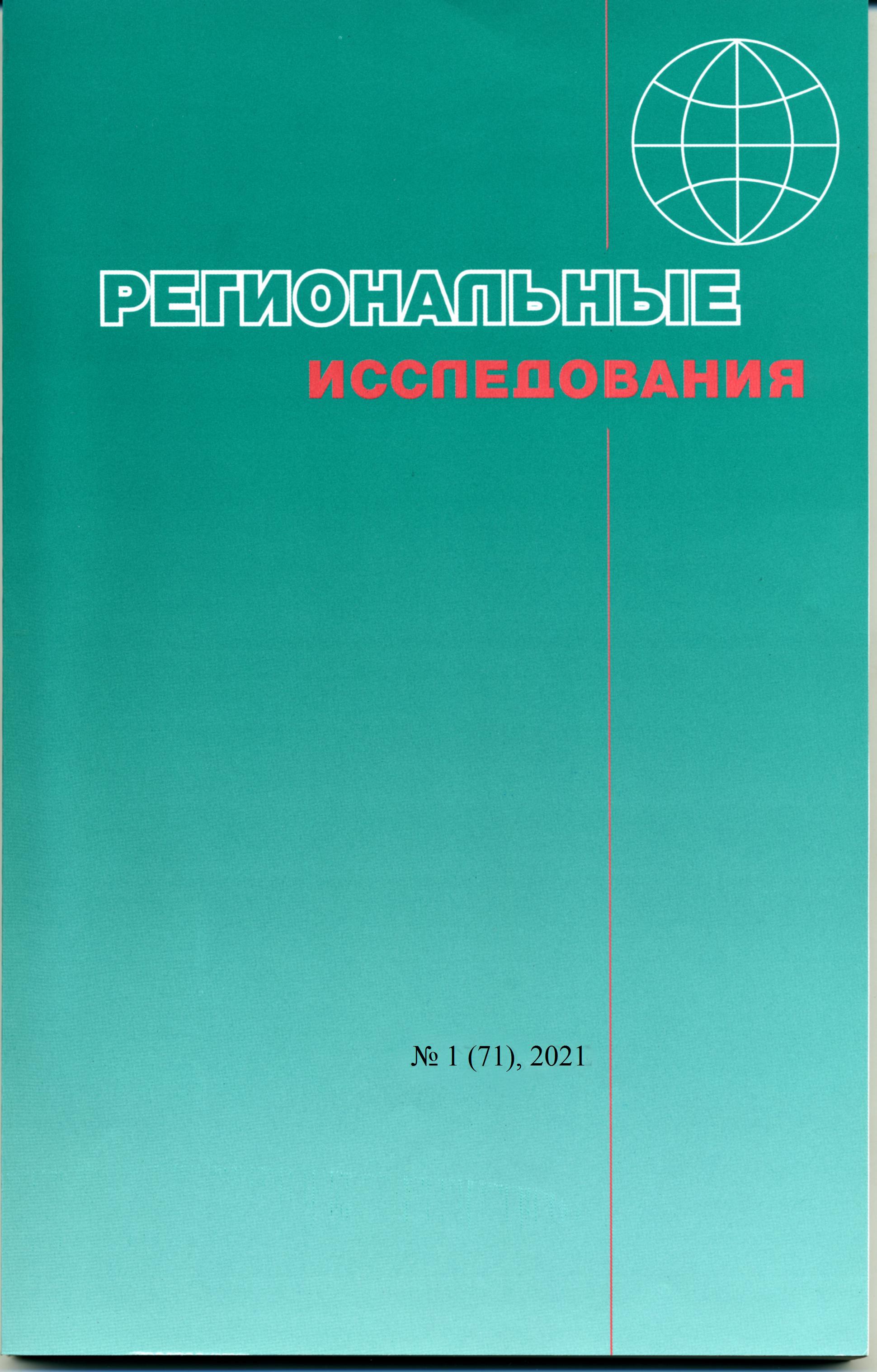Does geographical concentration affect the profitability of Russian enterprises?
DOI:
https://doi.org/10.5922/1994-5280-2021-1Keywords:
profitability, productivity, agglomeration economies, concentration, localization, urbanization, microdataAbstract
The article shows that profitability is, first, the best measurable approximation to productivity at the level of individual enterprises, and, second, an indicator that captures the possible benefits (or costs) of geographical concentration (agglomeration externalities) in their entirety. The analysis of open microdata of Rosstat and the Federal Tax Service on organizations with an average number of employees of no more than 250 reveals that in Russia the differences in profitability between cities and between industries with different levels of spatial concentration are small and poorly related to geographical conditions (the so-called benefits of localization and urbanization). Worse terms of trade, in particular higher labour costs, outweigh the productivity gains from concentration. At the same time, there are weak signs of a smaller spread of profitability among enterprises in more central territories due to better opportunities for imitation and exchange of experience. The profitability of enterprises is significantly influenced by their industry, but this relationship does not arise due to differences between industries in the degree of their geographical concentration. To assess the agglomeration effects, new measures of centrality that appreciate the network nature of territorial relations between residents of localities were used.
Financing
The study was conducted with the support of the RFBR grant No. 20-05-00695.
References
Гордеев В., Магомедов Р., Михайлова Т. Агломерационные эффекты в российской обрабатывающей промышленности. М., 2017. 25 с.
Литвинова Ю., Пономарёв Ю. Оценка совокупной факторной производительности в России: микроэконометрический анализ // Экономическое развитие России. 2017. № 3 (24). C. 18–25.
Ростислав К.В. Экономико-географическое положение как фактор различий в производи-тельности между регионами России // Региональные исследования. 2020. № 3. С. 79–91. DOI 10.5922/1994-5280-2020-7.
Ростислав К.В., Пономарёв Ю.Ю. Выявление наиболее значимых с точки зрения транспортных связей городов в России как инструмент противодействия распространению COVID-19 // Экономическое развитие России. 2020. № 8. С. 58–69.
Behrens K. Agglomeration theory with heterogeneous agents // Handbook of regional and urban economics / ed. by G. Duranton, J.V. Henderson, W.C. Strange. Edition 1, vol. 5. Elsevier, 2015. P. 171–245.
Bessonova E., Tsvetkova A. Productivity convergence trends within Russian industries : firm-level evidence // Bank of Russia working paper series, 2019. 75 p.
Bessonova E., Kozlov K., Yudaeva K. Trade liberalization, foreign direct investment, and productivity of Russian firms. Moscow, 2002. 38 p.
Cingano F., Schivardi F. Identifying the sources of local productivity growth // Journal of the European economic association. 2004. Vol. 2. № 4. P. 720–742.
Coelli T.J., Rao D.S.P., O’Donnell C.J., Battese G.E. An introduction to efficiency and productivity analysis. NewYork: Springer, 2005. 348 pp.
Di Giacinto V. et al. Mapping local productivity advantages in Italy: industrial districts, cities or both? // Journal of Economic Geography. 2014. Vol. 14. № 2. P. 365–394.
Ellison G., Glaeser E.L. Geographic concentration in U.S. Manufacturing industries: a dartboard approach // Journal of Political Economy. 1997. Vol. 105. № 5. P. 889–927.
Graham D.J. Identifying urbanisation and localisation externalities in manufacturing and service industries // Papers in Regional Science. 2009. Vol. 88. № 1. P. 63–84.
Henderson V.J. Marshall’s scale economies // Journal of Urban Economics. 2003. Vol. 53. № 1. P. 1–28.
Jennen M., Verwijmeren P. Agglomeration effects and financial performance // Urban Studies. 2010. Vol. 47. № 12. P. 2683–2703.
Melo P.C., Graham D.J., Noland R.B. Ameta-analysis of estimates of urban agglomeration economies // Regional Science and Urban Economics. 2009. Vol.39. № 3. P. 332–342.
O’Donnell C.J. Productivity and efficiency analysis : an economic approach to measuring and explaining managerial performance. Singapore: Springer, 2018. 439 p.
Pavelkova D. et al. Do clustered firms outperform the non-clustered? Evidence of financial performance in traditional industries // Economic research-ekonomskaistrazivanja. 2021. Vol. 0. № 0. P. 1–23. DOI 10.1080/1331677X.2021.1874460.
Scitovsky T. Two concepts of external economies // Journal of Political Economy. 1954. Vol. 62. № 2. P. 143–151.
Stavropoulos S., Skuras D. Firm profitability and agglomeration economies: an elusive relationship // Tijdschriftvooreconomische en socialegeografie. 2016. Vol. 107. № 1. P. 66–80.
Tukey J.W. Exploratory data analysis. Reading. Mass.: Addison-Wesley Pub. Co., 1977. P. 43–44.
Wood S.N. Generalized additive models. Boca Raton: chapman and hall /CRC, 2017. 496 p.
Бухгалтерская (финансовая) отчетность предприятий и организаций за 2018 год. Росстат. Открытые данные [Электр. ресурс]. URL: http://old.gks.ru/opendata/dataset/7708234640- bdboo2018 (дата обращения: 12.05.2020).
Единый реестр субъектов малого и среднего предпринимательства / Федеральная налоговая служба. 2020. [Электр. ресурс]. URL: https://www.nalog.ru/opendata/7707329152-rsmp/ (дата обращения: 30.05.2020).
Общероссийский классификатор территорий муниципальных образований (ОКТМО) [Электр. ресурс]. URL: https://www.gks.ru/opendata/7708234640-oktmo (дата обращения: 12.05.2020).
Сведения о среднесписочной численности работников организации за 2019 год / ФНС России [Электр. ресурс]. URL: https://www.nalog.ru/opendata/7707329152-sshr2019/ (дата обращения: 12.05.2020).
Статистический регистр хозяйствующих субъектов / Федеральная служба государственной статистики [Электр. ресурс]. URL: https://www.gks.ru/opendata/7708234640-urid1 (дата обращения: 12.05.2020).

